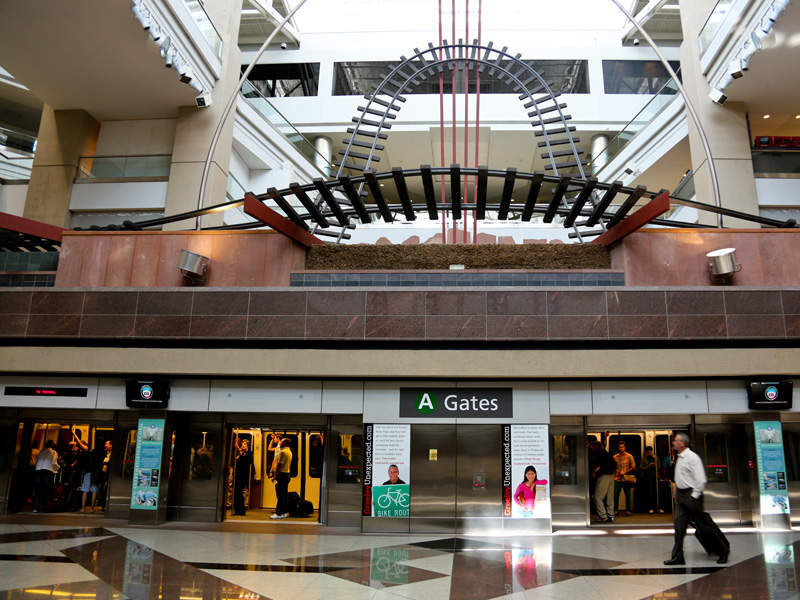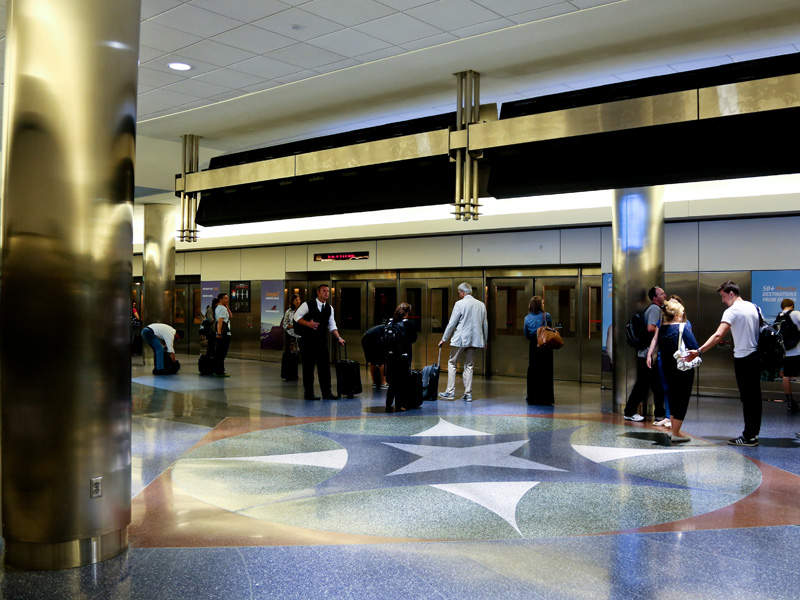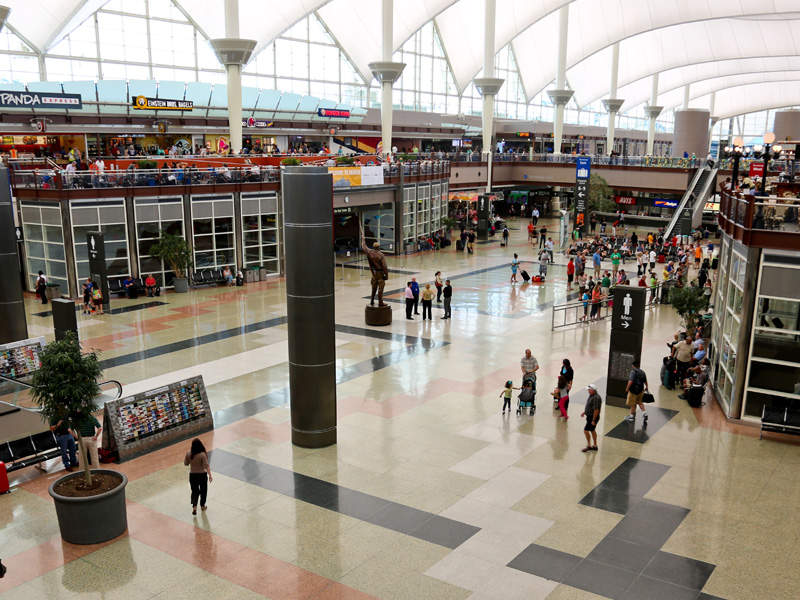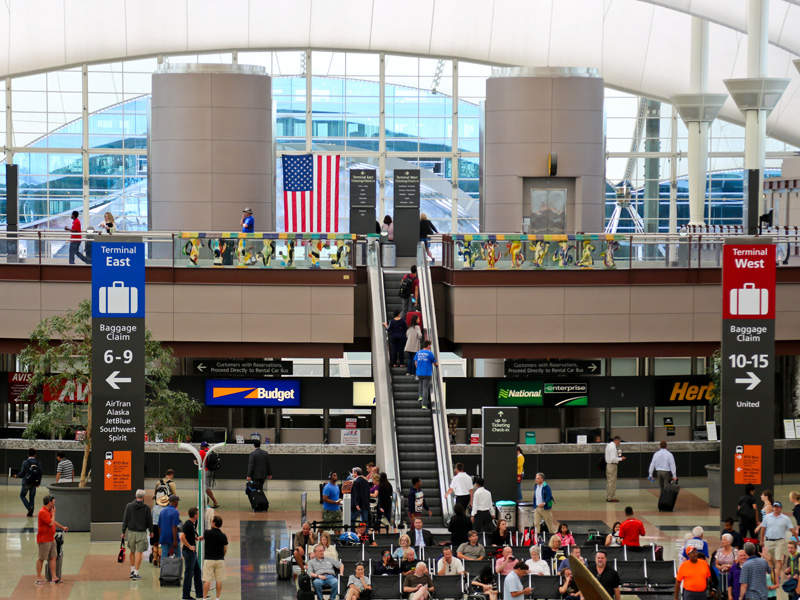Denver International Airport (DEN) in the US has embarked on a new development project that aims to modernise the existing Jeppesen terminal in order to improve services and accommodate the increasing passenger traffic.
The airport has chosen the Great Hall Partners consortium led by Spanish multinational company Ferrovial Airports in June 2016 to enter exclusive negotiations for a private-public-partnership (P3) to implement the project.
Great Hall Partners signed a 34-year concession agreement with the Denver International Airport for remodelling and commercial operation of the Jeppesen terminal in August 2017.
Handling more than 54 million passengers a year, DEN is one of the busiest airports and airline hubs in the US and touted as the primary economic engine for Colorado, generating approximately $26bn in annual revenues for the state.
Construction of the modernisation project began in July 2018 and is scheduled for completion in 2021.
The project is expected to create up to 450 construction jobs and more than 800 permanent jobs. It will also annually generate $3.5m in taxes and General Fund revenues for the City of Denver.
Jeppessen Terminal modernisation details
The modernisation of Jeppessen terminal is being carried out in four phases. The first phase includes installation of new check-in counters, which will be completed in mid-2019.
The second and third phase of the project will be completed by 2020. Additional check-in counters and new TSA passenger screening areas will be opened under the phases.
Scheduled for completion by late-2021, the final phase will involve the construction of new commercial areas.
The terminal improvements will be performed in three main areas, namely the ticketing and Transportation Security Agency (TSA) screening, baggage handling, and concessions areas.
The airline ticket counters will be consolidated, while the TSA screening areas at Level-6 will be consolidated and relocated. The baggage handling system will be modified to support the relocated ticket counters, while the shopping and dining options will be remodelled to provide better experience to the passengers using the terminal.
New modernised terminal is expected to accommodate 80 million passengers and will improve the food and retail options.
The airport authorities are also collaborating with the TSA officials to design an innovative new security screening prototype for the terminal. The new system will be more efficient and passenger-friendly and is aimed to become a model for other airports in the US.
Regardless of the P3 agreement, DEN plans to move forward with the TSA screening and ticketing counter relocation by considering another project delivery mechanism.
Financing
The estimated cost to design and build the project is up to $770m, which also includes an airport controlled contingency of $120m.
Great Hall Partners initially invested $258m in the project, which will be later recovered through instalments from the airport and a 20% share of the concession revenues from new shops and restaurants.
Key players involved with the Jeppesen terminal improvement
DEN began a competitive procurement process for qualified private partners in 2015. It identified four teams to bid for a final request for proposals (RFP) for the project, of which three responded. Led by Ferrovial, the pre-development contract includes contractors for the local, national and international companies.
Equity partners for the contract include Ferrovial Airports International, a JLC/Saunders joint venture, which includes Saunders and Magic Johnson Enterprises & Loop Capital.
The design and build partners include Ferrovial Agroman and Saunders Construction, while Luis Vidal + Architects, Harrison Kornberg Architects and Anderson Mason Dale are the project architects.
Other local engineers and contractors include Intermountain Electric, Civil Technology, Gilmore Construction, Sky Blue Builders, and Burgess Services.
During the pre-development phase of the project, DEN negotiated with Ferrovial to define the terms and the scope of work. Upon reaching an agreement, the pre-development contract was presented to the Denver City Council for approval in 2016.
Design and features of the existing Jeppesen terminal
Named after aviation pioneer Elrey B Jeppesen, the terminal is a 1.5 million square-feet facility featuring a central glass-walled atrium, and passenger amenities.
Designed by Fentress Bradburn Architects, the terminal’s roof is the centre of attraction. The white-peaked roof consists of two translucent layers of Teflon-coated fibreglass fabric, which mimics passing clouds. At its highest point, the roof is 126ft in height.
The terminal has dual entrances, Terminal East and Terminal West, and has three levels for passenger convenience and easing congestion. The three levels include Departures at Level-6, which features curbside baggage check-in and airline ticketing counters for departing passengers.
Drop-off and pick-up lanes for taxis, shuttles, buses, limousines and car rentals are at Level-5, whereas Level-4 is dedicated for passenger pick-up.
Of the three concourses (A, B and C) at the airport, two (B and C) are accessible only from the Jeppesen terminal through an automated guideway train system (AGTS), while Concourse A is accessible from both the terminal and through a passenger bridge.
Automated guide train system at Denver airport
The AGTS is an airport subway system that connects the Jeppesen terminal with the gates in the three concourses. Two central security-screening areas are located at the AGTS, while a third security-screening area is located on the way to Gate-A.
The subway stations feature flight information monitors, baggage information monitors and baggage-claim carousels.











